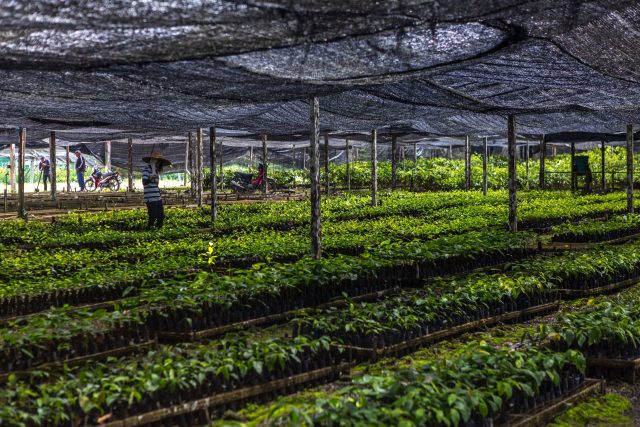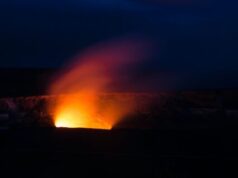More than half of the world’s aboveground carbon is stored in tropical forests, the degradation of which poses a direct threat to global climate regulation. Deforestation removes aboveground carbon in the form of trees, reducing the size of global carbon stocks in the process. Once forests are degraded, they are often perceived to have little ecological value, despite evidence of their ability to continue to provide important ecosystem services and to store significant amounts of carbon.
This misconception has marked degraded forests as prime candidates for full conversion to agricultural plantations, but recent research challenges this idea and offers a promising alternative—forest restoration is a more sustainable solution capable of both replenishing carbon storage and preserving biodiversity. While this concept isn’t new, the adoption of restoration practices has been impeded by uncertainties over its effectiveness.
Now, an international team of scientists from 13 institutions, including researchers from the Arizona State University Center for Global Discovery and Conservation Science (GDCS), has provided the first long-term comparison of aboveground carbon recovery rates between naturally regenerating and actively restored forests in Southeast Asia. The researchers found that restoration practices improved carbon storage recovery by more than 50% compared to natural regeneration. The paper was published today in Science.
“Not long ago, we treated degraded tropical forests as lost causes. Our new findings, combined with those of other researchers around the world, strongly suggest that restoring tropical forests is a viable and highly scalable solution to regaining lost carbon stocks on land,” said co-author and GDCS director Greg Asner.
The researchers studied an area of tropical forest in Malaysian Borneo, where agricultural activities have caused soaring deforestation rates for years. The study site was heavily logged in the 1980s and subsequently protected from further logging or conversion to plantation agriculture. To assess forest recovery, Asner and his team mapped the area using their Global Airborne Observatory, equipped with powerful lasers and spectrometers, in 2016. The resulting maps revealed the location and amount of carbon stored above ground across thousands of hectares of forest.
Find your dream job in the space industry. Check our Space Job Board »
Areas left to regenerate naturally recovered by as much as 2.9 tons of aboveground carbon per hectare of forest each year, highlighting the ability of degraded forests to recover if protected from full agricultural conversion.
First author Chris Philipson, of the University of Dundee and the ETH Zurich, said, “This quantitatively confirms that if degraded forests get effective protection, they can recover well naturally.”
Even more importantly, the researchers found that forest areas that underwent active restoration recovered 50% faster, from 2.9 to 4.4 tons of aboveground carbon per hectare per year. Restoration methods included planting native tree species, removing tree-climbing vines, and thinning vegetation around saplings to improve their chances of survival. Full ACD recovery in a naturally regenerating logged forest would take around 60 years, while recovery for an actively restored forest takes just 40 years.
This is the first time that a long time-series dataset has been used to demonstrate that active restoration helps the regeneration of forests after logging and other disturbances. However, the current carbon price is still not sufficient to pay for the cost of restoration, limiting the impact that this approach can have on the climate change crisis. However, new carbon offset programs could potentially fund these restoration costs.
“Science has laid out a clear pathway for land managers. We now must turn to the economics of the problem to generate the support to pursue these solutions,” said Asner. “Restoring degraded tropical forest works to mitigate climate change, and it saves biodiversity along the way.”
Provided by: Arizona State University
More information: C.D. Philipson et al. Active restoration accelerates the carbon recovery of human-modified tropical forests. Science (2020). science.sciencemag.org/cgi/doi … 1126/science.aay4490
Image: Dipterocarp seeds are collected in primary forest and grown in nurseries to provide sufficient planting material for large-scale restoration efforts.
Credit: Michael O’Brien / SEARRP











